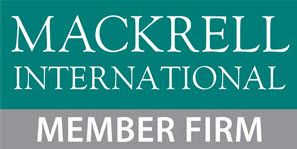By Curtis A. Welch
Published in the OSB Construction Law Section Newsletter, November 2019
Joint check agreements are common in the construction industry. Joint check agreements are commonly entered into between a general contractor and subcontractor for payment to a subsubcontractor or supplier, or may be entered into by other parties, including between an owner and general contractor for payment to a subcontractor. The purpose of a joint check agreement is to reduce the credit risk of failure to pay the person who provided the labor, materials and equipment. See 3 Bruner & O’Connor Construction Law § 8:52 (2019)
Breaches of joint check agreements, as with contracts in general, come in many forms, from a joint payee forging the other payee’s signature on the joint check, or otherwise negotiating the joint check without the other payee’s signature, or from an owner or general contractor failing to issue a joint check. This article focuses on the liability of the owner or general contractor under a third-party beneficiary theory for breach of an agreement to issue a joint check.
Third-Party Beneficiary Theory
As observed by the Oregon Court of Appeals, “joint check obligations are a ‘classic example of a third-party beneficiary contract.'” Gender Machine Works, Inc. v. Eidal Intern. Sales Corp., 145 Or App 198, 207 (1996)(citing T.S.I., Inc. v. Metric Constructors, Inc., 817 F2d 94, 96-97 (11th Cir 1987).
For the subcontractor or supplier to enforce the joint check agreement, it must be an intended beneficiary of the agreement, as opposed to an incidental beneficiary. See Sisters of St. Joseph v. Russell, 318 Or 370, 374-75 (1994); see also Northwest Airlines v. Crosetti Bros., 258 Or 340, 346 (1971).
The Gender Machine Works case involved the building of an industrial shredding machine for Archers Daniel Midland Company (“ADM”) to shred scrap tires for use as fuel at a cogeneration plant at one of ADM’s manufacturing facilities. Gender Machine, 145 Or App at 201. Eidal International Sales Corporation (“Eidal”) performed a minor amount of work on the shredder and sold the shredder to ADM. Id.
Eidal and Gender Machine entered into an agreement whereby Gender Machine would
receive the full $225,000 purchase price paid by ADM for the shredding machine. Subsequently, Eidal faxed to ADM a letter stating that Gender Machine was performing a substantial amount of work on the shredder and stating that payment was to be made by ADM in both Eidal’s and Gender Machine’s names. Id. at 202.
ADM’s representative signed the letter and handwrote a notation on it, acknowledging that he understood that the check for the $225,000 purchase price should be jointly payable to Eidal and Gender Machine. Id.
After the shredder was built and shipped to ADM, Eidal sent ADM an invoice for the $225,000 sum, but the invoice did not refer to Gender Machine or the joint check agreement. Id. Subsequently, ADM sent Eidal a check for $225,000, made payable to Eidal only, which Eidal deposited in its account without telling Gender Machine. Eidal later made a payment from its own account to Gender Machine for only a portion of the $225,000 sum owing to it. Id.
Gender Machine filed suit against Eidal and ADM alleging several claims, including a claim under a third-party beneficiary theory. Id. at 203.
In analyzing whether Gender Machine was entitled to enforce the joint check agreement, the Court summarized the principles set forth in the Sisters of St. Joseph case, supra, and the Northwest Airlines case, supra–intent to benefit the beneficiary; issuance of the check would have satisfied a duty from the promisee to the beneficiary; and the promisor’s performance would have benefited the beneficiary. The Court noted that, “[t]hus, in this case if (1) ADM and Eidal intended to benefit Gender by issuing a joint check; (2) ADM’s performance would have satisfied a duty of Eidal to Gender; and (3) ADM’s performance would have benefitted Gender, Gender was a third-party creditor beneficiary who was entitled to enforce the contract.” Id. at 206- 207.
The Court held that these elements were met and that Gender Machine was an intended creditor beneficiary of ADM’s joint payment obligation, noting that the signed letter agreement identified Gender Machine as performing substantial work on the project and that payment was to be made jointly to Eidal and Gender Machine. Id. at 207.
Defenses to a Third-Party Beneficiary Claim
As stated in 13 Williston on Contracts § 37:57 (4th ed.), “the foundation of an intended beneficiary’s rights lies in the contract between the promisor and promise.” (citations omitted). Thus, in general, “any defense connected to the formation of the contract, such as capacity, want of mutual assent, or consideration or any similar invalidating cause, may be raised by the promisor against the beneficiary.” Id.
Further, in general, “a third-party creditor beneficiary’s right to recover against the promisor is subject to any claim or defense arising from the beneficiary’s own conduct or agreement.” Sisters of St. Joseph, 318 Or at 379 (citing Restatement (Second) of Contracts § 309 (4) and comment c (1981).
The defense of payment by the promisor to the promisee, which is a defense not related to the formation of the contract or arising out of the beneficiary’s conduct, cannot be asserted as a defense to the third-party beneficiary’s claim against the promisor. This principle was made clear in the Gender Machine case. There, the promisor ADM had argued that its $225,000 payment to Eidal was a defense to the claim of third-party beneficiary Gender Machine against ADM. Gender Machine, 145 Or App at 210. In rejecting that argument, the Court stated that ADM “has not identified any persuasive reason why a promisor should be permitted to breach a joint payment obligation and then assert a defense of payment against the unpaid joint obligee. We perceive none.” Id. at 211.
The Court found persuasive the practical argument by Gender Machine that “[i]f ADM’s argument were the law, the promisor under a Joint Check Agreement would never be liable for issuing payment solely to one of the joint payees. Thus, the other payee would have no legal protection, and a promisor’s obligation would be illusory.” Id. at 210.
Discussion
Proving the three elements needed for a third-party beneficiary to enforce a joint check agreement— intent to benefit the beneficiary; issuance of the check would have satisfied a duty from the promisee to the beneficiary; and the promisor’s performance would have benefited the beneficiary—depends not only on the circumstances but also on the language used by the parties in the joint check agreement. The element of showing intent by the promisor and promise to benefit the third-party beneficiary is critical. An incidental beneficiary, as contrasted with an intended, or creditor, beneficiary is not entitled to a claim against the promisor. Sisters of St. Joseph v. Russell, supra, 318 Or at 375 (“. . . if the third party has paid no value and there is no intention to confer a contract right on that party, then the party is an incidental beneficiary who is not entitled to an action on the contract.”).
As a practical matter, if the joint check agreement is a two-party agreement executed by the promisor and promisee, as in the Gender Machine case, the subcontractor or supplier should insist on review and approval of the agreement by its counsel to determine if the above elements are met, and on being provided with a fully executed copy of the agreement, before beginning its performance.
Sometimes, there will be a three-party agreement among the owner, general contractor and subcontractor for issuance of a joint check. If that is the case, the subcontractor has a direct breach of contract claim against the owner in case of breach, in addition to a third-party beneficiary claim.
In the Gender Machine case, supra, the Court did not find that Gender Machine had a “first party” contract with ADM, because the communications that formed the joint check agreement were between ADM and Eidal. See Gender Machine, 145 Or App at 205. Thus, Gender Machine’s claim against ADM was limited to a third-party beneficiary claim.
In sum, if the parties decide to use a joint check agreement, such an agreement can be an aid to all involved in the construction project, if properly drafted and executed, and performed. These agreements help provide assurance to the owner and general contractor that work will continue on the project and that there will not be a bond claim filed or lien claim recorded, and help provide assurance to the subcontractor or supplier that they will be paid for the labor, materials or equipment that they have provided.
Contact Curt at cwelch@sussmanshank.com or (503) 227-1111.


